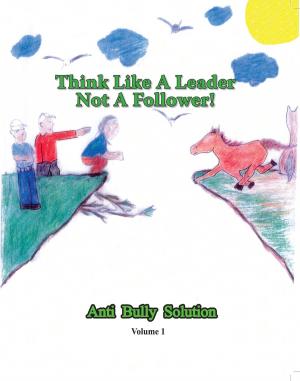The Tiger Full Growl Stop Smoking Process
Let the Tiger Crush Your Desire to Smoke
Nonfiction, Health & Well Being, Self Help, Addiction, Substance Abuse| Author: | Paul Lagergren | ISBN: | 9781626750036 |
| Publisher: | BookBaby | Publication: | January 23, 2013 |
| Imprint: | Language: | English |
| Author: | Paul Lagergren |
| ISBN: | 9781626750036 |
| Publisher: | BookBaby |
| Publication: | January 23, 2013 |
| Imprint: | |
| Language: | English |
The Tiger Full-Growl Stop Smoking Process is soundly anchored in science. From science we know that the desire to smoke originates in the unconscious mind and is produced by a faulty circuit in the brain that believes our lives depend on smoking. Further, neuroscience now tells us we can use the conscious mind to reach back into the unconscious mind, into the physicality of the brain, itself, and actually rewire the brain. Thus, we can unplug the faulty circuit and create new circuitry. Neuroplasticity is the term neuroscience uses to identify this changeability of the brain. We now know that we can use the conscious mind to focus back onto the brain from which our consciousness originates. Thus, we can generate new neural pathways and thereby determine new ways of thinking and behaving. (For more information on the concept of neuroplasticity, see Train Your Mind, Change Your Brain, the wonderful book by Sharon Begely.) What this means for those of us struggling to stop smoking is that we can change a desire to smoke into an even stronger desire not to smoke. We can re-train the unconscious mind to instantly annihilate any compulsion to smoke and thereby free ourselves from this insidious addiction. More good news is that we can do this powerful mental rewiring of the brain before we actually try to stop smoking. We can do this mental reconstruction while continuing to smoke. Now, when we do stop smoking, we can do so without the overwhelming desire to start again. The very idea that we would want to suck poisonous, cancer-causing particles and gasses into our life-giving lungs suddenly seems preposterous to the mind. Without continuous desires to smoke hounding us throughout the day, we can easily accept withdrawal for what it is: the evidence of the body’s wonderful, natural ability to detoxify and heal itself. Withdrawal is now understood in this new light. We come to realize that withdrawal is, in truth, nothing to fear at all. Instead we experience withdrawal as an inspiring reunion of mind, body, and spirit working by design in our own best interests.
The Tiger Full-Growl Stop Smoking Process is soundly anchored in science. From science we know that the desire to smoke originates in the unconscious mind and is produced by a faulty circuit in the brain that believes our lives depend on smoking. Further, neuroscience now tells us we can use the conscious mind to reach back into the unconscious mind, into the physicality of the brain, itself, and actually rewire the brain. Thus, we can unplug the faulty circuit and create new circuitry. Neuroplasticity is the term neuroscience uses to identify this changeability of the brain. We now know that we can use the conscious mind to focus back onto the brain from which our consciousness originates. Thus, we can generate new neural pathways and thereby determine new ways of thinking and behaving. (For more information on the concept of neuroplasticity, see Train Your Mind, Change Your Brain, the wonderful book by Sharon Begely.) What this means for those of us struggling to stop smoking is that we can change a desire to smoke into an even stronger desire not to smoke. We can re-train the unconscious mind to instantly annihilate any compulsion to smoke and thereby free ourselves from this insidious addiction. More good news is that we can do this powerful mental rewiring of the brain before we actually try to stop smoking. We can do this mental reconstruction while continuing to smoke. Now, when we do stop smoking, we can do so without the overwhelming desire to start again. The very idea that we would want to suck poisonous, cancer-causing particles and gasses into our life-giving lungs suddenly seems preposterous to the mind. Without continuous desires to smoke hounding us throughout the day, we can easily accept withdrawal for what it is: the evidence of the body’s wonderful, natural ability to detoxify and heal itself. Withdrawal is now understood in this new light. We come to realize that withdrawal is, in truth, nothing to fear at all. Instead we experience withdrawal as an inspiring reunion of mind, body, and spirit working by design in our own best interests.















